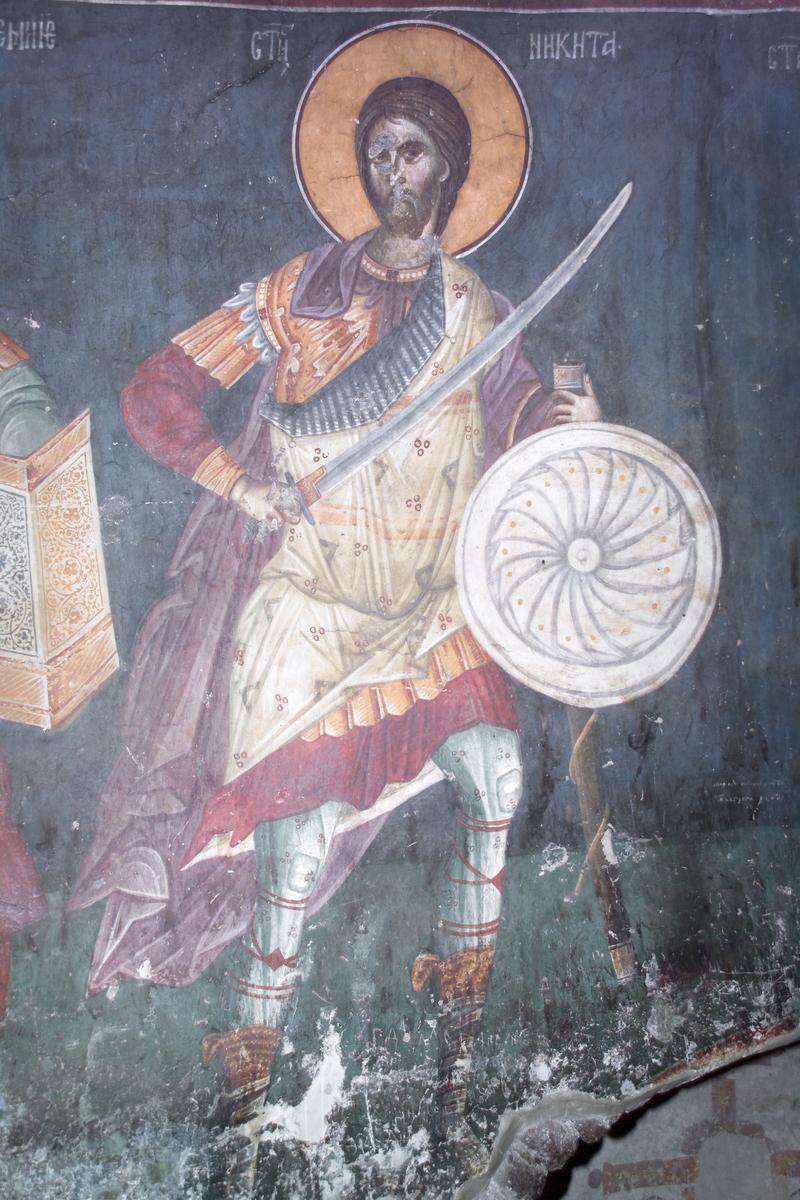
 |
|
|
#11 | |
|
Member
Join Date: Jul 2009
Location: Slovakia
Posts: 48
|
Quote:
the depiction of armour in particular seem to have had a great deal of anachronism (e.g. the continuous portrayal of scale/ lamellar armour).As to the ethnicity of the warriors saints I personally think its negligible as for example the Bulgarian 14th century version of manasses chronicle has illustrations with similar figures. Furthermore you'll find very similar/identical portrayal of warrior saints in Kosovar/Serbian frescoes. Coming back to the accuracy of the depiction of arms and armour, some pieces however do have novelties in them, especially in terms of weapons. You can see yelman-less sabres and "paramerions" as well as the cuman-style quivers in the first half of the 14th century , whereas the early 15th century fresco of a trio of warrior-saints (cca. 1408-1420) presents an interesting "development" ( manasija monastery)  Note the bow-case of the central figure , he has two arrows in it with its fletching pointed upwards , which is more characteristic of Anatolian Turks (there is an article on a similar matter by Russ Mitchell in volume 4 of journal of medieval military history). The rightmost figure of St Nikita sports a sabre with a quite visible yelmen, which is again more typical of later weapons. You can compare those with earlier depictions (such as the one in my earlier post) and with the depiction of St. Nicetas from Gracanica (1321-22)  Note the lack of yelmen as well as the "habaki" part between the hilt and the blade.. again a feature more characteristic of earlier sabres. Swords are sometimes presented in anachronistic way (some appearing even after two centuries e.g. you'll find an identical depiction of a sword from a 12th century fresco in a 14th century one etc.) but some are "modern" in their appearance ,e.g. pieces that have semi-curved cross-guard and even hand and a half grips. Those examples of sabres/quivers as well as swords are in my opinion a sign that not all of those fresco depictions are necessarily "outdated" or entirely fantastical. Some are filled with immense attention to detail that can in fact rival the art from Western Europe. Regards, Samuel |
|
|
|

|
|
|